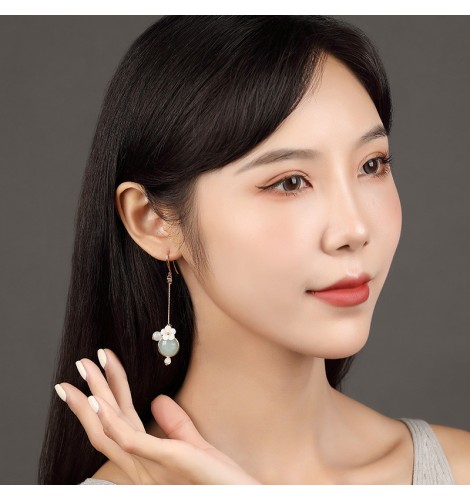Unveiling the Charms of Cheongsam and Hanfu in Modern Fashion
The traditional allure of the cheongsam and hanfu has been captivating the world with their timeless elegance and cultural significance. As we delve into the modern interpretations of these garments, it becomes evident that their appeal is not just rooted in history but also in their contemporary relevance. The cheongsam, with its distinctive high collar and body-hugging fit, has been a symbol of sophistication and femininity since the 1920s in China. Similarly, the hanfu, with its flowing sleeves and intricate patterns, represents the rich cultural heritage of ancient China, dating back to the Han dynasty.

The Fusion of Past and Present
The modern fashion industry has seen a resurgence of interest in traditional Chinese attire, with designers and wearers alike exploring new ways to integrate the cheongsam and hanfu into contemporary wardrobes. This fusion is not merely a trend; it’s a celebration of cultural identity and a testament to the adaptability of these garments. The cheongsam, for instance, has been reimagined with modern cuts and materials, making it suitable for both formal and casual settings. The hanfu, with its traditional elements, has been embraced by a younger generation who appreciate its historical significance and aesthetic appeal.

Cultural Significance and Modern Adaptation
Each piece of cheongsam and hanfu is a canvas that tells a story of Chinese history and artistry. The intricate embroidery, the choice of colors, and the patterns all carry symbolic meanings and reflect the wearer’s social status and personal taste. In the modern context, these elements have been reinterpreted to cater to diverse tastes while maintaining the essence of traditional Chinese fashion. The cheongsam, with its slits and fitted silhouette, has been adapted to flatter various body types, and the hanfu has been stylized with modern accessories to appeal to a broader audience.

Global Recognition and Influence
The global fashion stage has also taken notice of the cheongsam and hanfu, with international designers and celebrities incorporating elements of these traditional garments into their collections and appearances. This has led to a greater appreciation for Chinese fashion and a deeper understanding of its cultural roots. The cheongsam, with its elegant lines, has been featured on red carpets and in fashion shows worldwide, while the hanfu has inspired a new wave of interest in traditional Chinese clothing among fashion enthusiasts and historians alike.

Conclusion
The cheongsam and hanfu are not just garments; they are cultural artifacts that have stood the test of time and continue to evolve with the changing tides of fashion. Their charm lies in the harmony between tradition and modernity, offering a unique blend of elegance and cultural pride. As we continue to explore the fusion of these traditional elements with contemporary styles, we not only preserve our heritage but also contribute to a global dialogue on fashion and culture.
-470x500.jpg)






